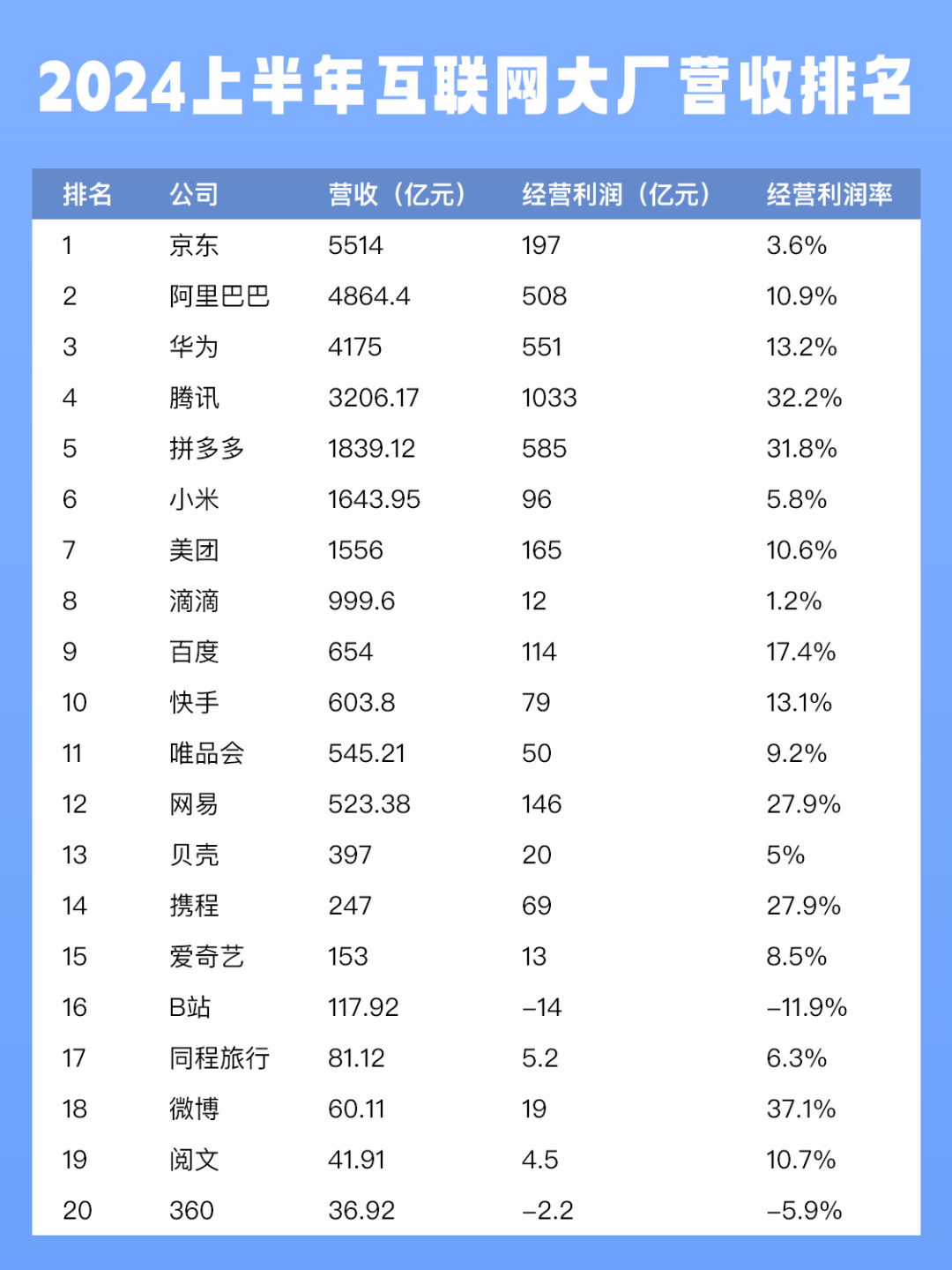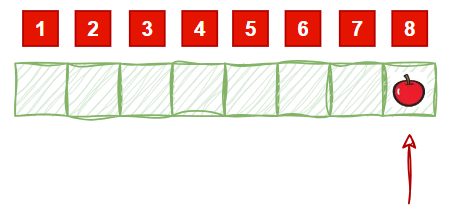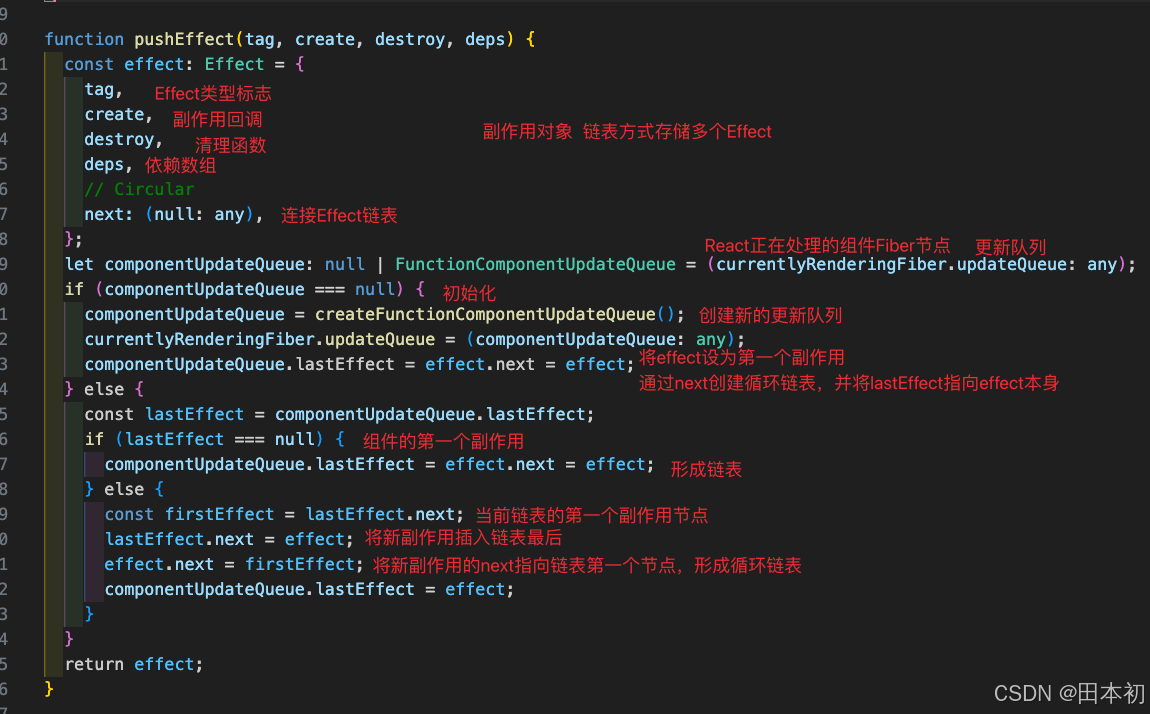在双目视觉系统中,三角测量是一种基于几何原理的三维重建技术,通过分析同一场景在两个不同视角下的二维图像来确定物体的三维坐标。这种方法的核心在于利用摄像机的内参和相对位姿(由旋转矩阵和平移向量描述),将图像中的像素坐标转换为三维空间中的射线,并通过求解这些射线的交点来确定物体的空间位置。

三角测量的原理:
1. 摄像机模型:每个摄像机都由一个内参矩阵(K)和一个外参矩阵(由旋转矩阵R和平移向量T组成)来描述。内参矩阵包含了摄像机的焦距和主点坐标,而外参矩阵描述了摄像机在世界坐标系中的位置和方向。
2. 图像点到射线的转换:给定图像中的一个点,通过内参矩阵可以将其转换为摄像机坐标系下的射线。图像点的齐次坐标通过内参矩阵的逆矩阵进行转换。
3. 射线的交点:在双目视觉系统中,同一物体在两个摄像机的图像中形成的两个射线,理论上应该在三维空间中相交于一点,即该物体的真实位置。通过解线性方程组或最小二乘问题,可以找到这个交点。
解算过程:
1. 预处理:首先,使用内参矩阵的逆矩阵将图像中的像素坐标转换为摄像机坐标系下的齐次坐标。
2. 构建射线方程:利用摄像机的投影矩阵(由内参矩阵和外参矩阵的乘积得到),构建两条射线的方程。这些方程通常表示为射线的方向向量和射线上的一点。
3. 三角测量:通过求解两条射线的交点,即求解由两个摄像机的投影矩阵和对应的图像点构成的线性方程组,来确定物体的三维坐标。
4. 优化:由于噪声和误差,直接求解可能不会得到精确的交点。因此,通常采用最小二乘法来找到一个最佳近似解,该解最小化了从两个视角观测到的图像点与实际图像点之间的误差。
5. 结果输出:最后,输出计算得到的三维坐标,这些坐标表示了物体在世界坐标系中的位置。
在代码中,可以通过OpenCV库中的`triangulatePoints`函数实现三角测量的核心步骤,`LinearLSTriangulation`函数通过直接解线性方程组来求解射线的交点,从而得到物体的三维坐标。具体代码如下:
(1)以图片方式读取获得角点像素坐标:
// 三角测量(进行特征提取,并计算空间坐标)
#include<opencv2/calib3d/calib3d.hpp>
#include<opencv2/core/core.hpp>
#include<opencv2/highgui/highgui.hpp>
#include<opencv2/imgproc/imgproc.hpp>
#include <opencv2/opencv.hpp>
#include<iostream>
#include <opencv2/core/traits.hpp>
#include "opencv2/features2d.hpp"
#include <opencv2/features2d/features2d.hpp>
#include <chrono>
#include <math.h>
#include <fstream>
#include <sstream>
#include <opencv2/core/utils/logger.hpp> //隐藏日志
using namespace std;
using namespace cv;
Mat_<double> LinearLSTriangulation(
Point3d u,//homogenous image point (u,v,1)
Matx34d P,//camera 1 matrix
Point3d u1,//homogenous image point in 2nd camera
Matx34d P1//camera 2 matrix
);
void reconstruct(Mat& K1, Mat& K2, Mat& R, Mat& T, vector<Point2f>& p1, vector<Point2f>& p2, Mat& structure);
Point2f pixel2cam(const Point2d& p, const Mat& K);
int main()
{
cv::utils::logging::setLogLevel(utils::logging::LOG_LEVEL_SILENT);//不再输出日志
//或
//utils::logging::setLogLevel(utils::logging::LOG_LEVEL_ERROR);//只输出错误日志
Size image_size;
Size board_size = Size(11, 8);//图片上棋盘格(定标板)的内角点个数(行、列的角点数)
vector<Point2f> image_corners1;//缓存每幅图像上检测到的角点数
vector<Point2f> image_corners2;
vector<vector<Point2f>> corners_Seq;//保存检测到的所有角点
vector<Point2f> p1, p2, p3, p4;
Mat K1(Matx33d(
2.4454469774229988e+03, 0, 1.1904497601237404e+03, 0,
2.4501877368468731e+03, 9.6797955993264543e+02, 0, 0, 1));//L
Mat K2(Matx33d(
2.4495657252877713e+03, 0, 1.2021880540540637e+03, 0,
2.4547868050821821e+03, 1.0231012864078014e+03, 0, 0, 1));//R
Mat Kinv1;
Mat Kinv2;
invert(K1, Kinv1, DECOMP_LU);
invert(K2, Kinv2, DECOMP_LU);
Mat R = (Mat_<double>(3, 3) << 9.9930463873988629e-01, 1.1239278405046448e-02,
-3.5551619005033626e-02, -1.0815154950411883e-02,
9.9986830622891665e-01, 1.2099695133177138e-02,
3.5682928920476704e-02, -1.1706785205644879e-02,
9.9929459108103103e-01);
Mat T = (Mat_<double>(3, 1) << -3.1067452891668921e+02, 3.5113614087664948e+00,
-2.3577131931354245e+00);
Mat structure1, structure2;
/*********************读入图像,检测角点********************************************/
string imageFileName1, imageFileName2;
imageFileName1 = "l1.bmp";
imageFileName2 = "r1.bmp";
cout << imageFileName1 << endl;
cout << imageFileName2 << endl;
Mat image1 = imread(imageFileName1);
Mat image2 = imread(imageFileName2);
image_size = image1.size();
Mat image_gray1, image_gray2;
Mat dstImage1, dstImage2;
cvtColor(image1, image_gray1, cv::COLOR_BGR2GRAY);
cvtColor(image2, image_gray2, cv::COLOR_BGR2GRAY);
//检测棋盘格标定板的角点
bool patternfound1 = findChessboardCorners(image1, board_size, image_corners1, CALIB_CB_ADAPTIVE_THRESH + CALIB_CB_NORMALIZE_IMAGE);
bool patternfound2 = findChessboardCorners(image2, board_size, image_corners2, CALIB_CB_ADAPTIVE_THRESH + CALIB_CB_NORMALIZE_IMAGE);
//+ CALIB_CB_FAST_CHECK);
if (!patternfound1 && !patternfound2)
{
cout << "Can not find chessboard corners!" << endl;
return -1;
}
else
{
/* 亚像素精确化 */
cornerSubPix(image_gray1, image_corners1, Size(11, 11), Size(-1, -1), TermCriteria(cv::TermCriteria::EPS + cv::TermCriteria::COUNT, 30, 0.1));
cornerSubPix(image_gray2, image_corners2, Size(11, 11), Size(-1, -1), TermCriteria(cv::TermCriteria::EPS + cv::TermCriteria::COUNT, 30, 0.1));
Mat imageTemp1 = image1.clone();
Mat imageTemp2 = image2.clone();
for (int j1 = 0; j1 < image_corners1.size(); j1++)
{
circle(imageTemp1, image_corners1[j1], 10, Scalar(0, 0, 255), 2, 8, 0);
}
for (int j2 = 0; j2 < image_corners2.size(); j2++)
{
circle(imageTemp2, image_corners2[j2], 10, Scalar(0, 255, 0), 2, 8, 0);
}
namedWindow("左图所有角点", WINDOW_NORMAL);
imshow("左图所有角点", imageTemp1);
namedWindow("右图所有角点", WINDOW_NORMAL);
imshow("右图所有角点", imageTemp2);
int n = 2;
int m = 3;//测量角点选取
Point2f k1, k2, k3, k4;
k1 = image_corners1[n];
k2 = image_corners1[m];
k3 = image_corners2[n];
k4 = image_corners2[m];
circle(image1, k1, 4, Scalar(255, 0, 255), 2, 8, 0);
circle(image1, k2, 4, Scalar(255, 255, 0), 2, 8, 0);
circle(image2, k3, 4, Scalar(255, 0, 255), 2, 8, 0);
circle(image2, k4, 4, Scalar(255, 255, 0), 2, 8, 0);
namedWindow("左图选中角点", WINDOW_NORMAL);
imshow("左图选中角点", image1);
namedWindow("右图选中角点", WINDOW_NORMAL);
imshow("右图选中角点", image2);
cout << "左图点1坐标为(" << k1.x << "," << k1.y << "),点2坐标为(" << k2.x << "," << k2.y << ");" << endl;
cout << "右图点1坐标为(" << k3.x << "," << k3.y << "),点2坐标为(" << k4.x << "," << k4.y << ");" << endl;
//前一个点
p1.push_back(k1);
p3.push_back(k3);
reconstruct(K1, K2, R, T, p1, p3, structure1);
float a1 = structure1.at<float>(0, 0) / structure1.at<float>(3, 0);
float b1 = structure1.at<float>(1, 0) / structure1.at<float>(3, 0);
float c1 = structure1.at<float>(2, 0) / structure1.at<float>(3, 0);
Point3d points1;
points1.x = a1;
points1.y = b1;
points1.z = c1;
Point3d u1(k1.x, k1.y, 1); Point3d u2(k3.x, k3.y, 1);
Mat_<double> um_1 = Kinv1 * Mat_<double>(u1);
u1 = Point3d(um_1);
Mat_<double> um_2 = Kinv2 * Mat_<double>(u2);
u2 = Point3d(um_2);
Matx34d P(1, 0, 0, 0,
0, 1, 0, 0,
0, 0, 1, 0);
Matx34d P1(9.9930463873988629e-01, 1.1239278405046448e-02, -3.5551619005033626e-02, -3.1067452891668921e+02,
-1.0815154950411883e-02,9.9986830622891665e-01, 1.2099695133177138e-02, 3.5113614087664948e+00,
3.5682928920476704e-02, -1.1706785205644879e-02,9.9929459108103103e-01, -2.3577131931354245e+00);//第二张图像的相机位姿,结合工程5和7(0125标定图像3)
//Mat R = (Mat_<double>(3, 3) << 9.9930463873988629e-01, 1.1239278405046448e-02,
// -3.5551619005033626e-02, -1.0815154950411883e-02,
// 9.9986830622891665e-01, 1.2099695133177138e-02,
// 3.5682928920476704e-02, -1.1706785205644879e-02,
// 9.9929459108103103e-01);
//Mat T = (Mat_<double>(3, 1) << -3.1067452891668921e+02, 3.5113614087664948e+00,
// -2.3577131931354245e+00);
Mat_<double>X_1 = LinearLSTriangulation(u1, P, u2, P1);
double er1 = sqrt((a1 - X_1(0)) * (a1 - X_1(0)) + (b1 - X_1(1)) * (b1 - X_1(1)) + (c1 - X_1(2)) * (c1 - X_1(2)));
Point2d pt1_cam_1 = pixel2cam(k1, K1);
Point2d pt1_cam_3d_1(
points1.x / points1.z,
points1.y / points1.z
);
Point2f pt2_cam_1 = pixel2cam(k3, K2);
Mat pt2_trans_1 = R * (Mat_<double>(3, 1) << points1.x, points1.y, points1.z) + T;
pt2_trans_1 /= pt2_trans_1.at<double>(2, 0);
double n_x1 = K2.at<double>(0, 0) * pt2_trans_1.at<double>(0, 0) + K2.at<double>(0, 2);
double n_y1 = K2.at<double>(1, 1) * pt2_trans_1.at<double>(1, 0) + K2.at<double>(1, 2);
double ddd_p1 = sqrt((n_x1 - k3.x) * (n_x1 - k3.x) + (n_y1 - k3.y) * (n_y1 - k3.y));
//后一个点
p2.push_back(k2);
p4.push_back(k4);
reconstruct(K1, K2, R, T, p2, p4, structure2);
float a2 = structure2.at<float>(0, 0) / structure2.at<float>(3, 0);
float b2 = structure2.at<float>(1, 0) / structure2.at<float>(3, 0);
float c2 = structure2.at<float>(2, 0) / structure2.at<float>(3, 0);
Point3d points2;
points2.x = a2;
points2.y = b2;
points2.z = c2;
Point3d uu1(k2.x, k2.y, 1); Point3d uu2(k4.x, k4.y, 1);
Mat_<double> uum_1 = Kinv1 * Mat_<double>(uu1);
uu1 = Point3d(uum_1);
Mat_<double> uum_2 = Kinv2 * Mat_<double>(uu2);
uu2 = Point3d(uum_2);
Mat_<double>X_2 = LinearLSTriangulation(uu1, P, uu2, P1);
double er2 = sqrt((a2 - X_2(0)) * (a2 - X_2(0)) + (b2 - X_2(1)) * (b2 - X_2(1)) + (c2 - X_2(2)) * (c2 - X_2(2)));
Point2d pt1_cam_2 = pixel2cam(k2, K1);
Point2d pt1_cam_3d_2(
points2.x / points2.z,
points2.y / points2.z
);
Point2f pt2_cam_2 = pixel2cam(k4, K2);
Mat pt2_trans_2 = R * (Mat_<double>(3, 1) << points2.x, points2.y, points2.z) + T;
pt2_trans_2 /= pt2_trans_2.at<double>(2, 0);
double n_x2 = K2.at<double>(0, 0) * pt2_trans_2.at<double>(0, 0) + K2.at<double>(0, 2);
double n_y2 = K2.at<double>(1, 1) * pt2_trans_2.at<double>(1, 0) + K2.at<double>(1, 2);
double ddd_p2 = sqrt((n_x2 - k4.x) * (n_x2 - k4.x) + (n_y2 - k4.y) * (n_y2 - k4.y));
//两点间的距离
double d1 = sqrt((a1 - a2) * (a1 - a2) + (b1 - b2) * (b1 - b2) + (c1 - c2) * (c1 - c2));
double d2 = sqrt((X_1(0) - X_2(0)) * (X_1(0) - X_2(0)) + (X_1(1) - X_2(1)) * (X_1(1) - X_2(1)) + (X_1(2) - X_2(2)) * (X_1(2) - X_2(2)));
cout << "自带计算出的点1三维坐标为" << endl;
cout << "(" << a1 << "," << b1 << "," << c1 << ")" << endl;
cout << "编写计算出的点1三维坐标为" << endl;
cout << "(" << X_1(0) << "," << X_1(1) << "," << X_1(2) << ")" << endl;
cout << "两坐标误差距离为" << er1 << "mm" << endl;
cout << endl << "自带计算出的点2三维坐标为" << endl;
cout << "(" << a2 << "," << b2 << "," << c2 << ")" << endl;
cout << "编写计算出的点2三维坐标为" << endl;
cout << "(" << X_2(0) << "," << X_2(1) << "," << X_2(2) << ")" << endl;
cout << "两坐标误差距离为" << er2 << "mm" << endl;
cout << endl << "自带计算出的点1和点2的距离为" << d1 << "mm" << endl;
cout << "编写计算出的点1和点2的距离为" << d2 << "mm" << endl;
}
waitKey(0);
return 0;
}
Point2f pixel2cam(const Point2d& p, const Mat& K)
{
return Point2f
(
(p.x - K.at<double>(0, 2)) / K.at<double>(0, 0),
(p.y - K.at<double>(1, 2)) / K.at<double>(1, 1)
);
}
Mat_<double> LinearLSTriangulation(
Point3d u,//homogenous image point (u,v,1)
Matx34d P,//camera 1 matrix
Point3d u1,//homogenous image point in 2nd camera
Matx34d P1//camera 2 matrix
)
{
//build A matrix
Matx43d A(u.x * P(2, 0) - P(0, 0), u.x * P(2, 1) - P(0, 1), u.x * P(2, 2) - P(0, 2),
u.y * P(2, 0) - P(1, 0), u.y * P(2, 1) - P(1, 1), u.y * P(2, 2) - P(1, 2),
u1.x * P1(2, 0) - P1(0, 0), u1.x * P1(2, 1) - P1(0, 1), u1.x * P1(2, 2) - P1(0, 2),
u1.y * P1(2, 0) - P1(1, 0), u1.y * P1(2, 1) - P1(1, 1), u1.y * P1(2, 2) - P1(1, 2)
);
//build B vector
Matx41d B(-(u.x * P(2, 3) - P(0, 3)),
-(u.y * P(2, 3) - P(1, 3)),
-(u1.x * P1(2, 3) - P1(0, 3)),
-(u1.y * P1(2, 3) - P1(1, 3)));
//solve for X
Mat_<double> X;
solve(A, B, X, DECOMP_SVD);
return X;
}
void reconstruct(Mat& K1, Mat& K2, Mat& R, Mat& T, vector<Point2f>& p1, vector<Point2f>& p2, Mat& structure)
{
Mat proj1(3, 4, CV_32FC1);
Mat proj2(3, 4, CV_32FC1);
proj1(Range(0, 3), Range(0, 3)) = Mat::eye(3, 3, CV_32FC1);
proj1.col(3) = Mat::zeros(3, 1, CV_32FC1);
cout << "相机1的RT矩阵为" << proj1 << endl;
R.convertTo(proj2(Range(0, 3), Range(0, 3)), CV_32FC1);
T.convertTo(proj2.col(3), CV_32FC1);
cout << "相机2的RT矩阵为" << proj2 << endl;
Mat fK1, fK2;
K1.convertTo(fK1, CV_32FC1);
K2.convertTo(fK2, CV_32FC1);
proj1 = fK1 * proj1;
proj2 = fK2 * proj2;
cout << endl;
triangulatePoints(proj1, proj2, p1, p2, structure);
}运行结果如下:
注:在代码中使用棋盘格验证了三角测量结果的准确性(这里棋盘格的大小是50mm,选取编号2和3角点,角点编号从0开始)。

(2)已知像素坐标直接解算三维坐标:
// 三角测量(进行特征提取,并计算空间坐标)
#include<opencv2/calib3d/calib3d.hpp>
#include<opencv2/core/core.hpp>
#include<opencv2/highgui/highgui.hpp>
#include<opencv2/imgproc/imgproc.hpp>
#include <opencv2/opencv.hpp>
#include<iostream>
#include <opencv2/core/traits.hpp>
#include "opencv2/features2d.hpp"
#include <opencv2/features2d/features2d.hpp>
#include <chrono>
#include <math.h>
#include <fstream>
#include <sstream>
using namespace std;
using namespace cv;
Mat_<double> LinearLSTriangulation(
Point3d u,//homogenous image point (u,v,1)
Matx34d P,//camera 1 matrix
Point3d u1,//homogenous image point in 2nd camera
Matx34d P1//camera 2 matrix
);
void reconstruct(Mat& K1, Mat& K2, Mat& R, Mat& T, vector<Point2f>& p1, vector<Point2f>& p2, Mat& structure);
Point2f pixel2cam(const Point2d& p, const Mat& K);
int main()
{
vector<Point2f> p1, p2, p3, p4;
Mat K1(Matx33d(
2.4454469774229988e+03, 0, 1.1904497601237404e+03, 0,
2.4501877368468731e+03, 9.6797955993264543e+02, 0, 0, 1));//L
Mat K2(Matx33d(
2.4495657252877713e+03, 0, 1.2021880540540637e+03, 0,
2.4547868050821821e+03, 1.0231012864078014e+03, 0, 0, 1));//R
Mat Kinv1;
Mat Kinv2;
invert(K1, Kinv1, DECOMP_LU);
invert(K2, Kinv2, DECOMP_LU);
Mat R = (Mat_<double>(3, 3) << 9.9930463873988629e-01, 1.1239278405046448e-02,
-3.5551619005033626e-02, -1.0815154950411883e-02,
9.9986830622891665e-01, 1.2099695133177138e-02,
3.5682928920476704e-02, -1.1706785205644879e-02,
9.9929459108103103e-01);
Mat T = (Mat_<double>(3, 1) << -3.1067452891668921e+02, 3.5113614087664948e+00,
-2.3577131931354245e+00);
Mat structure1, structure2;
cv::Point2f k1(1073.45f, 1036.86f);
cv::Point2f k2(1147.08f, 1037.43f);
cv::Point2f k3(493.27f, 1136.36f);
cv::Point2f k4(568.306f, 1136.03f);
cout << "左图点1坐标为(" << k1.x << "," << k1.y << "),点2坐标为(" << k2.x << "," << k2.y << ");" << endl;
cout << "右图点1坐标为(" << k3.x << "," << k3.y << "),点2坐标为(" << k4.x << "," << k4.y << ");" << endl;
//前一个点
p1.push_back(k1);
p3.push_back(k3);
reconstruct(K1, K2, R, T, p1, p3, structure1);
float a1 = structure1.at<float>(0, 0) / structure1.at<float>(3, 0);
float b1 = structure1.at<float>(1, 0) / structure1.at<float>(3, 0);
float c1 = structure1.at<float>(2, 0) / structure1.at<float>(3, 0);
Point3d points1;
points1.x = a1;
points1.y = b1;
points1.z = c1;
Point3d u1(k1.x, k1.y, 1); Point3d u2(k3.x, k3.y, 1);
Mat_<double> um_1 = Kinv1 * Mat_<double>(u1);
u1 = Point3d(um_1);
Mat_<double> um_2 = Kinv2 * Mat_<double>(u2);
u2 = Point3d(um_2);
Matx34d P(1, 0, 0, 0,
0, 1, 0, 0,
0, 0, 1, 0);
Matx34d P1(9.9930463873988629e-01, 1.1239278405046448e-02, -3.5551619005033626e-02, -3.1067452891668921e+02,
-1.0815154950411883e-02, 9.9986830622891665e-01, 1.2099695133177138e-02, 3.5113614087664948e+00,
3.5682928920476704e-02, -1.1706785205644879e-02, 9.9929459108103103e-01, -2.3577131931354245e+00);//第二张图像的相机位姿,结合工程5和7(0125标定图像3)
Mat_<double>X_1 = LinearLSTriangulation(u1, P, u2, P1);
double er1 = sqrt((a1 - X_1(0)) * (a1 - X_1(0)) + (b1 - X_1(1)) * (b1 - X_1(1)) + (c1 - X_1(2)) * (c1 - X_1(2)));
Point2d pt1_cam_1 = pixel2cam(k1, K1);
Point2d pt1_cam_3d_1(
points1.x / points1.z,
points1.y / points1.z
);
Point2f pt2_cam_1 = pixel2cam(k3, K2);
Mat pt2_trans_1 = R * (Mat_<double>(3, 1) << points1.x, points1.y, points1.z) + T;
pt2_trans_1 /= pt2_trans_1.at<double>(2, 0);
double n_x1 = K2.at<double>(0, 0) * pt2_trans_1.at<double>(0, 0) + K2.at<double>(0, 2);
double n_y1 = K2.at<double>(1, 1) * pt2_trans_1.at<double>(1, 0) + K2.at<double>(1, 2);
double ddd_p1 = sqrt((n_x1 - k3.x) * (n_x1 - k3.x) + (n_y1 - k3.y) * (n_y1 - k3.y));
//后一个点
p2.push_back(k2);
p4.push_back(k4);
reconstruct(K1, K2, R, T, p2, p4, structure2);
float a2 = structure2.at<float>(0, 0) / structure2.at<float>(3, 0);
float b2 = structure2.at<float>(1, 0) / structure2.at<float>(3, 0);
float c2 = structure2.at<float>(2, 0) / structure2.at<float>(3, 0);
Point3d points2;
points2.x = a2;
points2.y = b2;
points2.z = c2;
Point3d uu1(k2.x, k2.y, 1); Point3d uu2(k4.x, k4.y, 1);
Mat_<double> uum_1 = Kinv1 * Mat_<double>(uu1);
uu1 = Point3d(uum_1);
Mat_<double> uum_2 = Kinv2 * Mat_<double>(uu2);
uu2 = Point3d(uum_2);
Mat_<double>X_2 = LinearLSTriangulation(uu1, P, uu2, P1);
double er2 = sqrt((a2 - X_2(0)) * (a2 - X_2(0)) + (b2 - X_2(1)) * (b2 - X_2(1)) + (c2 - X_2(2)) * (c2 - X_2(2)));
Point2d pt1_cam_2 = pixel2cam(k2, K1);
Point2d pt1_cam_3d_2(
points2.x / points2.z,
points2.y / points2.z
);
Point2f pt2_cam_2 = pixel2cam(k4, K2);
Mat pt2_trans_2 = R * (Mat_<double>(3, 1) << points2.x, points2.y, points2.z) + T;
pt2_trans_2 /= pt2_trans_2.at<double>(2, 0);
double n_x2 = K2.at<double>(0, 0) * pt2_trans_2.at<double>(0, 0) + K2.at<double>(0, 2);
double n_y2 = K2.at<double>(1, 1) * pt2_trans_2.at<double>(1, 0) + K2.at<double>(1, 2);
double ddd_p2 = sqrt((n_x2 - k4.x) * (n_x2 - k4.x) + (n_y2 - k4.y) * (n_y2 - k4.y));
//两点间的距离
double d1 = sqrt((a1 - a2) * (a1 - a2) + (b1 - b2) * (b1 - b2) + (c1 - c2) * (c1 - c2));
double d2 = sqrt((X_1(0) - X_2(0)) * (X_1(0) - X_2(0)) + (X_1(1) - X_2(1)) * (X_1(1) - X_2(1)) + (X_1(2) - X_2(2)) * (X_1(2) - X_2(2)));
cout << "自带计算出的点1三维坐标为" << endl;
cout << "(" << a1 << "," << b1 << "," << c1 << ")" << endl;
cout << "编写计算出的点1三维坐标为" << endl;
cout << "(" << X_1(0) << "," << X_1(1) << "," << X_1(2) << ")" << endl;
cout << "两坐标误差距离为" << er1 << "mm" << endl;
cout << endl << "自带计算出的点2三维坐标为" << endl;
cout << "(" << a2 << "," << b2 << "," << c2 << ")" << endl;
cout << "编写计算出的点2三维坐标为" << endl;
cout << "(" << X_2(0) << "," << X_2(1) << "," << X_2(2) << ")" << endl;
cout << "两坐标误差距离为" << er2 << "mm" << endl;
cout << endl << "自带计算出的点1和点2的距离为" << d1 << "mm" << endl;
cout << "编写计算出的点1和点2的距离为" << d2 << "mm" << endl;
return 0;
}
Point2f pixel2cam(const Point2d& p, const Mat& K)
{
return Point2f
(
(p.x - K.at<double>(0, 2)) / K.at<double>(0, 0),
(p.y - K.at<double>(1, 2)) / K.at<double>(1, 1)
);
}
Mat_<double> LinearLSTriangulation(
Point3d u,//homogenous image point (u,v,1)
Matx34d P,//camera 1 matrix
Point3d u1,//homogenous image point in 2nd camera
Matx34d P1//camera 2 matrix
)
{
//build A matrix
Matx43d A(u.x * P(2, 0) - P(0, 0), u.x * P(2, 1) - P(0, 1), u.x * P(2, 2) - P(0, 2),
u.y * P(2, 0) - P(1, 0), u.y * P(2, 1) - P(1, 1), u.y * P(2, 2) - P(1, 2),
u1.x * P1(2, 0) - P1(0, 0), u1.x * P1(2, 1) - P1(0, 1), u1.x * P1(2, 2) - P1(0, 2),
u1.y * P1(2, 0) - P1(1, 0), u1.y * P1(2, 1) - P1(1, 1), u1.y * P1(2, 2) - P1(1, 2)
);
//build B vector
Matx41d B(-(u.x * P(2, 3) - P(0, 3)),
-(u.y * P(2, 3) - P(1, 3)),
-(u1.x * P1(2, 3) - P1(0, 3)),
-(u1.y * P1(2, 3) - P1(1, 3)));
//solve for X
Mat_<double> X;
solve(A, B, X, DECOMP_SVD);
return X;
}
void reconstruct(Mat& K1, Mat& K2, Mat& R, Mat& T, vector<Point2f>& p1, vector<Point2f>& p2, Mat& structure)
{
Mat proj1(3, 4, CV_32FC1);
Mat proj2(3, 4, CV_32FC1);
proj1(Range(0, 3), Range(0, 3)) = Mat::eye(3, 3, CV_32FC1);
proj1.col(3) = Mat::zeros(3, 1, CV_32FC1);
cout << "相机1的RT矩阵为" << proj1 << endl;
R.convertTo(proj2(Range(0, 3), Range(0, 3)), CV_32FC1);
T.convertTo(proj2.col(3), CV_32FC1);
cout << "相机2的RT矩阵为" << proj2 << endl;
Mat fK1, fK2;
K1.convertTo(fK1, CV_32FC1);
K2.convertTo(fK2, CV_32FC1);
proj1 = fK1 * proj1;
proj2 = fK2 * proj2;
cout << endl;
triangulatePoints(proj1, proj2, p1, p2, structure);
}运行结果如下:




















